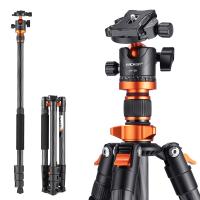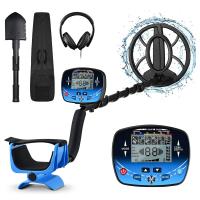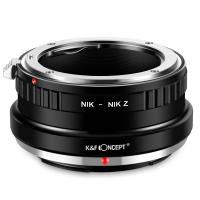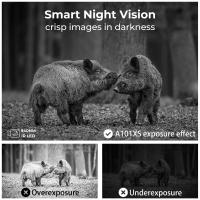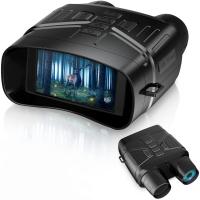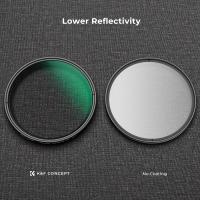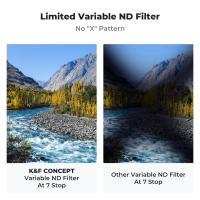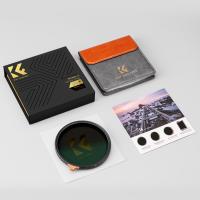Reviews
Eliminates UV Light Improving Clarity and Provides Lens Protection
At about 4mm thick, with its measurements of 4” x 5.65”, the K&F Concept UV Cinema Filter is a pretty hefty chunk of glass, and with all those coatings, on both sides, a beautiful thing to behold. A UV filter is generally used to, you guessed it, block UV light from a light sensitive material, and very often as inexpensive insurance to protect the front element of expensive lenses.
I have a number of K&F Concept filters, most of my lenses live their lives with a K&F protective filter on their front element. I also own some of their other photo/video accessories as well; I consider them a trusted manufacturer.
As the seller asserts, their Cinema Filter is sized specifically for Tilta and Smallrig mini matt boxes, although there may be other manufacturers that I’m not aware of. A matt box, that fits onto the front of a lens, is basically used for two purposes, as a filter holder and a lens shade. In the case of the Tilta MB-T15 matt box I use, there are grooves on the leading edge into which the filter slides and is held snuggly in place.
Handling the filter takes some care, since it is not enclosed in anything, for example a frame, but is glass from edge to edge. In our case, we keep cotton gloves around for such situations, and use them when handling the filter. Oddly, K&F Concept has always provided a cleaning cloth with every other filter I’ve acquired from them, but not in this case; it would be nice if they did, but I’m not complaining.
The filter arrives in retail packaging, with a magnetic closure, that is a storage case unto itself, however the actual filter case, that gives the impression of faux leather, is exceptional. It has a flip open flap with a bright orange nylon strap attached that when pulled, slides the filter up and out, making it convenient to grasp from the edges. The inner lining of the filter case appears to be soft cotton, although I am not certain of that.
I ran three tests with the filter: one to check its exposure accuracy, another to check whether it diminishes the sharpness of the transmitted image, and a third to check the effectiveness of its UV blocking. I included results for each.
For the exposure and sharpness tests, I photographed the lettering on the back of a box of cake mix, under artificial light. In the case of the exposure test, I simply calculated the exposure with the UV filter applied, and made the exposure. I then removed the filter, and made another exposure without changing the camera settings. I found that the filter has no significant effect on exposure; both exposures were recorded with the histogram in the same range.
For the sharpness test, I used the same two images, with and without the filter, and enlarged them 500%. In this case, again, I found that the filter did not diminish sharpness to any significant degree, which is surprising given the thickness of the glass. I provided the pictures and labelled them.
To test the filters UV effect, I shot the same outdoor scene, at the same camera settings, with and without the filter. To my eye, it may have reduced UV a tiny bit, but not enough to matter. That said, modern digital sensors, unaltered, record the entire spectrum of visible light, as well as most of the spectrum of infrared and ultraviolet light. In order to record only visible light, manufacturers install what is called an IR Cut Hot Mirror filter over the digital sensor and its Bayer Array of most off-the-shelf digital cameras. Digital cameras sold without this filter are referred to as a “Full Spectrum Camera.” If you’re not sure whether your camera is full spectrum or not, it isn’t; full spectrum cameras produce a result similar to that of infrared film.
UV filters are effective when recording on film, but have little added effect when capturing with a digital sensor that already has a UV filter installed by the manufacturer. In the case of my digital imaging, I use UV filters to protect the front element of expensive lenses. And in that respect, the K&F Concept Cinema UV Filter can provide the same protection for expensive cinema lenses without impacting camera settings, in effect providing relatively inexpensive insurance.
The physical quality of the K&F Concept ND Cinema Filter, and its coatings, along with the provided case, appear outstanding. I’m looking forward to using the filter in a live shooting situation.
I have a number of K&F Concept filters, most of my lenses live their lives with a K&F protective filter on their front element. I also own some of their other photo/video accessories as well; I consider them a trusted manufacturer.
As the seller asserts, their Cinema Filter is sized specifically for Tilta and Smallrig mini matt boxes, although there may be other manufacturers that I’m not aware of. A matt box, that fits onto the front of a lens, is basically used for two purposes, as a filter holder and a lens shade. In the case of the Tilta MB-T15 matt box I use, there are grooves on the leading edge into which the filter slides and is held snuggly in place.
Handling the filter takes some care, since it is not enclosed in anything, for example a frame, but is glass from edge to edge. In our case, we keep cotton gloves around for such situations, and use them when handling the filter. Oddly, K&F Concept has always provided a cleaning cloth with every other filter I’ve acquired from them, but not in this case; it would be nice if they did, but I’m not complaining.
The filter arrives in retail packaging, with a magnetic closure, that is a storage case unto itself, however the actual filter case, that gives the impression of faux leather, is exceptional. It has a flip open flap with a bright orange nylon strap attached that when pulled, slides the filter up and out, making it convenient to grasp from the edges. The inner lining of the filter case appears to be soft cotton, although I am not certain of that.
I ran three tests with the filter: one to check its exposure accuracy, another to check whether it diminishes the sharpness of the transmitted image, and a third to check the effectiveness of its UV blocking. I included results for each.
For the exposure and sharpness tests, I photographed the lettering on the back of a box of cake mix, under artificial light. In the case of the exposure test, I simply calculated the exposure with the UV filter applied, and made the exposure. I then removed the filter, and made another exposure without changing the camera settings. I found that the filter has no significant effect on exposure; both exposures were recorded with the histogram in the same range.
For the sharpness test, I used the same two images, with and without the filter, and enlarged them 500%. In this case, again, I found that the filter did not diminish sharpness to any significant degree, which is surprising given the thickness of the glass. I provided the pictures and labelled them.
To test the filters UV effect, I shot the same outdoor scene, at the same camera settings, with and without the filter. To my eye, it may have reduced UV a tiny bit, but not enough to matter. That said, modern digital sensors, unaltered, record the entire spectrum of visible light, as well as most of the spectrum of infrared and ultraviolet light. In order to record only visible light, manufacturers install what is called an IR Cut Hot Mirror filter over the digital sensor and its Bayer Array of most off-the-shelf digital cameras. Digital cameras sold without this filter are referred to as a “Full Spectrum Camera.” If you’re not sure whether your camera is full spectrum or not, it isn’t; full spectrum cameras produce a result similar to that of infrared film.
UV filters are effective when recording on film, but have little added effect when capturing with a digital sensor that already has a UV filter installed by the manufacturer. In the case of my digital imaging, I use UV filters to protect the front element of expensive lenses. And in that respect, the K&F Concept Cinema UV Filter can provide the same protection for expensive cinema lenses without impacting camera settings, in effect providing relatively inexpensive insurance.
The physical quality of the K&F Concept ND Cinema Filter, and its coatings, along with the provided case, appear outstanding. I’m looking forward to using the filter in a live shooting situation.
07/10/2024
Guess you like products
£25.99 £13.99
£55.99 £33.48
Guess you like articles














